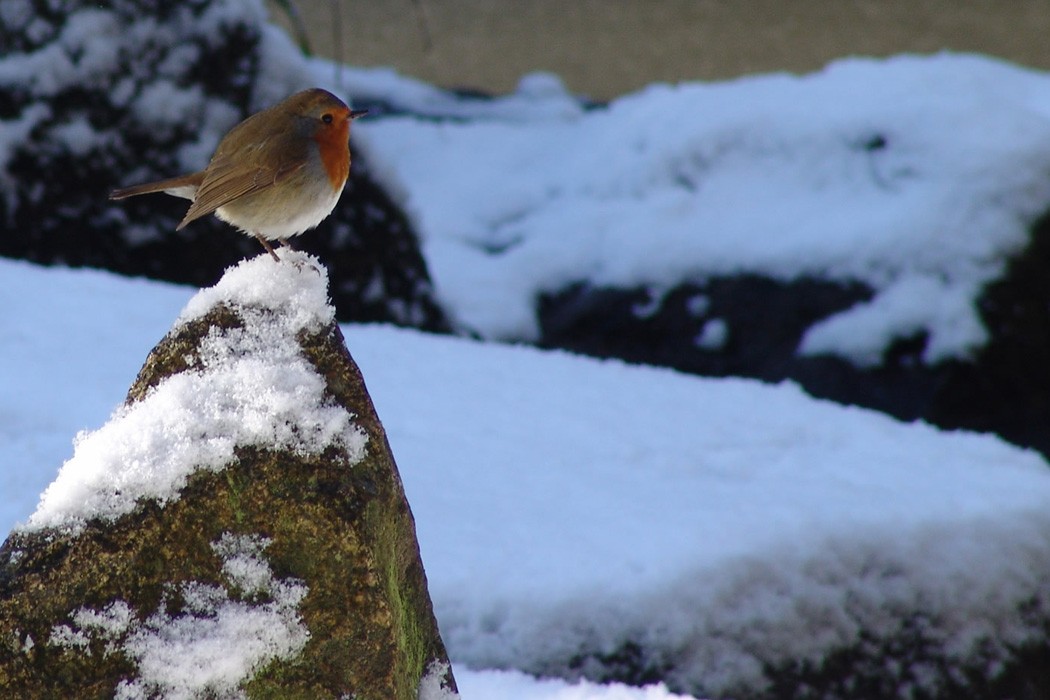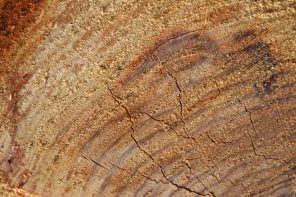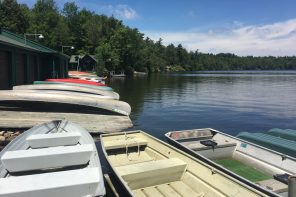On the day it reached 13 degrees below zero, I decided to go for a walk. Our dog begged to go after weeks marooned inside, so I snapped on her leash and crunched out the back door. We had not yet passed two houses when my Bella, a Dalmatian, began to congeal. Her gait became halting and jerky, like a short-circuiting robot. Rather than whimper or whine, she appeared simply confused, struck dumb in the face of a new force she could not understand. I pivoted for home.
It quickly became clear that Bella could not walk even the few feet back to our door, so I scooped her into my arms, ran across the driveway, and placed her onto the brown carpet of our family room. There, she cowered and shivered convulsively.
A decade in Georgia had not prepared either of us for our first winter in Indiana. I am a lifelong Southerner: raised in Texas, an undergraduate in North Carolina, a decade in Atlanta. I’ve done shorter stints in South Carolina, the Rio Grande Valley, and in an assortment of Latin American countries, most of them tropical. But I regarded the Midwest, especially the Midwest in winter, as a foreign land.
On that day in January, I went for a walk out of a mixture of wonderment, curiosity, and a sort of religious horror. What did 13 degrees below zero feel like? What was it like to walk in a wind chill of -40? You may as well have asked me what transcendence felt like, or justice, or perfect love. The air outside my door was an abstraction that I could suddenly feel with my skin, a new idea in which I could, literally, take a walk. It’s not often you get that chance.
So I rubbed our poor dog for a few moments, put my gloves back on, and headed outside.
***
As a Ph.D. student in religion, I knew I would be lucky to get an academic job anywhere. Still, I told friends, I fervently hoped that I did not wind up in a place that combined three characteristics: I hoped it would not be cold, and flat, and rural. Minneapolis would be fine (not rural). Alabama would be fine (not cold), and Appalachia would be okay (not flat).
Naturally, I got a job offer at a Quaker seminary in east central Indiana.
So what did I do? I packed a Penske truck in the sweltering Atlanta heat, drove my family’s belongings north, and grew nervous as the leaves fell and the days grew shorter.
As winter approached, I joked about my fears of the northern winter. In Texas, the coldest I’d ever experienced was in summer, in one of many aggressively air-conditioned Whataburgers. I had the same heavy coat from the ages of roughly 15 to 27, and I never knew where I’d put my one pair of gloves. I had never owned or worn a scarf.
But besides my jokey nervousness, I felt something else—a kind of giddy excitement. Because of its sheer novelty, the Midwest winter felt like an unwrapped Christmas package, or maybe the gates of a theme park (a Calvinist theme park).
Take the fireplace, for example. We did not have one in Atlanta, and I pined for a day cool enough to use our new one. When the time arrived, I set off the smoke alarm with a series of experiments with the damper—experiments seeded by a conversation with the chimneysweep. But who cared? Who cared that the house smelled like a campfire? I had a fireplace! Chimneysweeps still existed! Neverland beckoned from the other side of the equinox.
Almost immediately, I began to use the fireplace more than my wife thought strictly necessary. Every chilly night, I wanted to make hot chocolate for our two small boys and read stories in front of the fire. As a new professor, I lived out dreams of having students over to my house — dreams whose atmosphere required an atmospheric crackle. Unfortunately the students came on a fall day with temperatures in the high 50s. I built a fire anyway. Everyone sat dutifully around it, perspiring lightly.
I experienced other bursts of enthusiasm. The first time snow stuck to the ground, I sprang from bed before sunrise and grabbed the new snow shovel. Later that day, my wife told her high school students that her husband had shoveled snow for the first time. It blew their minds.
I had sledded before, but only kind of. North Texas, where I grew up, gets little snow and has few significant hills. But on the rare occasions when snow stuck to the ground, we wanted to sled. So people worked with what they knew; parents roped sleds and inner tubes to the back of their pick-ups, then whipped the kids around parking lots, water-ski style.
Yet sledding on a hill remained a novelty. So when we had the first significant snowfall of my first winter in Indiana, I borrowed two sleds from the neighbors and ferried my boys (then ages four and two) to the first hill I could find. The next snowfall, we found a bigger hill. We returned the snowfall after that. And the snowfall after that. And …
By January, colleagues had begun apologizing for the constant snow, and for the winter itself. “It’s not usually like this,” they’d say, sounding like someone apologizing for a good friend that one time when he got way too drunk. On the other hand, it wasn’t just one time; it kept happening. Forecasters talked about a “polar vortex,” and schools closed off and on for weeks.
Where I come from, schools closed because none of us knew how to drive on icy roads. When an ice storm hit Atlanta the same winter, traffic literally froze. In a metropolitan area of 5.5 million, drivers abandoned cars on the interstate and Good Samaritans brought food to the stranded; my wife’s cousin spent the night on an overpass. In an earlier winter, I drove into Atlanta after an ice storm, using the one open southbound lane on Interstate 85. In the city, abandoned cars littered the roadsides and jutted from curbs at odd angles. The scene looked like a post-apocalyptic art installation, the city so quiet, so desolate, so resigned.
In Indiana, however, I learned a new rationale for cancellations: the risk that students get hypothermia while waiting for a school bus. The possibility had, quite literally, never occurred to me. When I saw students trying to walk to school through snow, in t-shirts, it made sense. At wind chills of -40, I learned, it takes as little as 10 minutes to get frostbite.
Still, I wanted to go for a walk. I wanted to feel a condition that existed only as a concept, like the temperature on Mars. With my own skin, I wanted to experience something completely novel, a sensation utterly unknown. So I re-crossed my driveway and headed north.
Nothing moved — no cars, no people, no animals. Beneath the iron sky of late afternoon, I trudged heavily, exposing only my face to the air. Crunch, crunch, crunch. The moisture in my cheeks crystallized, my skin becoming brittle and foreign. It felt weird. Yet because I was wearing all the clothes I owned, the rest of my body felt fine. This, I thought, is no big deal.
Then, I turned the corner and headed into the wind. And, as with transcendence, there were no words for what I felt. I looked deeply into it, peered into the coldness of the void, and took a few determined steps forward. And then I thought, oh hell no, and turned right back around.
***
I write a day before the fall equinox; tomorrow, I begin my third Midwestern winter. I feel traces of the old dread, but for new, clearer reasons. I mourn the extra 15 minutes I will lose every morning as I try to get my children into their coats, gloves, and hats. I know a prohibitively expensive problem in my wife’s antilock brake system sticks in the winter cold, leaving the car dead a few mornings a year. I know I tend to get anxious and depressed in February, and that I no longer spring from bed to shovel the driveway. And I know that the problem with the Indiana winter is less that it’s cold than that it’s long.
Once, as my family drove home from mass on an April Sunday, it began to snow. Again. My wife and I looked at each other in despair. Then, from the back seat, the voice of my five-year-old son, a wild enthusiast for sledding, fires, snowballs, and wooly mammoth hunts, sang out. “It’s snowing!” he exulted, then let out a contented sigh. “I love Indiana.”
I am also settling into the rhythms of winter. I have learned the kind of snow that makes for good snowmen and the kind of snow that does not. I no longer set off the smoke alarm when making a fire. I know that fresh snow is beautiful and silent at night, that vultures congregate en masse in the skeletal branches of a few neighborhood trees, and that, when they come close, you can hear the whoosh-whooshing of their wings on the still air. I know that my CR-V can usually, but not always, make it over the hump of snow perma-plowed into my street’s median.
In my way, I have also started to become protective of my family’s nascent winter rituals. In the summer, my wife built a lovely, stone landscaping wall on the steep slope between our deck and the low part of our backyard. In the process, however, she inadvertently blocked the sledding path my sons and I had built the previous fall—the one that proved so fast that my son frequently rammed the chain-link fence at the far side of the yard (I eventually made him wear his bike helmet). I was not ready to surrender the tradition, so I asked my wife if we could shorten the wall. She said yes. While the backyard lost some of its aesthetic appeal, the sledding path remains for my boys—and, let’s be honest, for me.
Winter remains harsh. On the same day of my walk, the day that it was 13 degrees below zero—still the coldest temperature I have ever experienced—I saw a robin sitting on a thin, icy branch outside our kitchen window. He had puffed up all his feathers in a way that made him look slightly ridiculous, like a tiny, macho henchman prickling at an insult. He looked frigid, alone, and pluckily brave. I later learned that robins puff themselves up to stay warm, but I didn’t mind the gesture anyway. I had returned to my home, to my fire, to my shivering dog. This little bird was out there, alive, red-breasted, flying. It deserved to strut.




